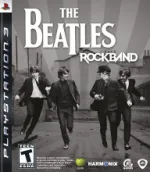Our extra-large special edition is here. Subscribe today and receive the 25% longer issue at no extra cost!
The Beatles: Rock Band Review
It’s hard to fathom the number of stars that needed to align for this game to come to light, but align they did, and the game community can now reap the benefit. Harmonix has done a remarkable job of bringing the Beatles’ music to life in an interactive setting, devoting enormous attention to the details of history and authenticity that Beatles fans demand. The developers also added their own visual flair to the game, making this the most aesthetically beautiful music game to yet release.
The game ships with fewer songs than we’ve come to expect on a disc, they’re all from one band, and some of them aren’t as challenging as expert players might wish. Those three things are the only reasons one should marshal concerns at the game, and those issues must be stacked against a preponderance of quality and excellence in every other facet of the game experience.
While much of the core Rock Band experience remains intact, the presence of The Beatles warranted a full remodeling of the menus and visual style. Small adjustments to the front end make No Fail mode and Lefty Switch easily accessible. In addition, the World Tour structure is scrapped for a simpler progression tracing the history of the band. Strong performances unlock old photos and other extras from the band’s weighty career. Even loading screens have some added spice, with never-before-heard snippets of dialogue, tunings, and other audio clips gathered from The Beatles old between-takes recordings.
The biggest addition to the formula is harmony vocals. Up to three microphones can be plugged in beside the instruments, enabling either busy six-player parties, or the more challenging option of three or four person bands, where each instrumentalist tackles a vocal part simultaneously. An excellent vocal trainer helps players learn their parts, and nailing those tough harmonies can bring new life to classic tunes.
The progression through venues is a great lesson in the breadth of music produced by The Beatles, but the highlights of the experience are the Abbey Road recordings in the latter half of the game. Rather than show repeated scenes of the historic recording space, Harmonix conjures imaginative dreamscapes to represent the lyrics and tone of the music being played. Combined with pitch-perfect recreations of historic venues like the Ed Sullivan Show and Shea Stadium, the visual component shines.
I’ve left the most central aspect of the game for last, because it’s hard to speak about music whose merits and quality have been debated for over 40 years. Suffice to say, the songs on display here helped shape entire branches of popular music that came in later years. The game does an admirable job of showcasing that music, delivering a brand new way for fans to appreciate it, and undoubtedly drawing new fans into the fold.

Get the Game Informer Print Edition!
Explore your favorite games in premium print format, delivered to your door.
- 10 issues per year
- Only $4.80 per issue
- Full digital magazine archive access
- Since 1991











